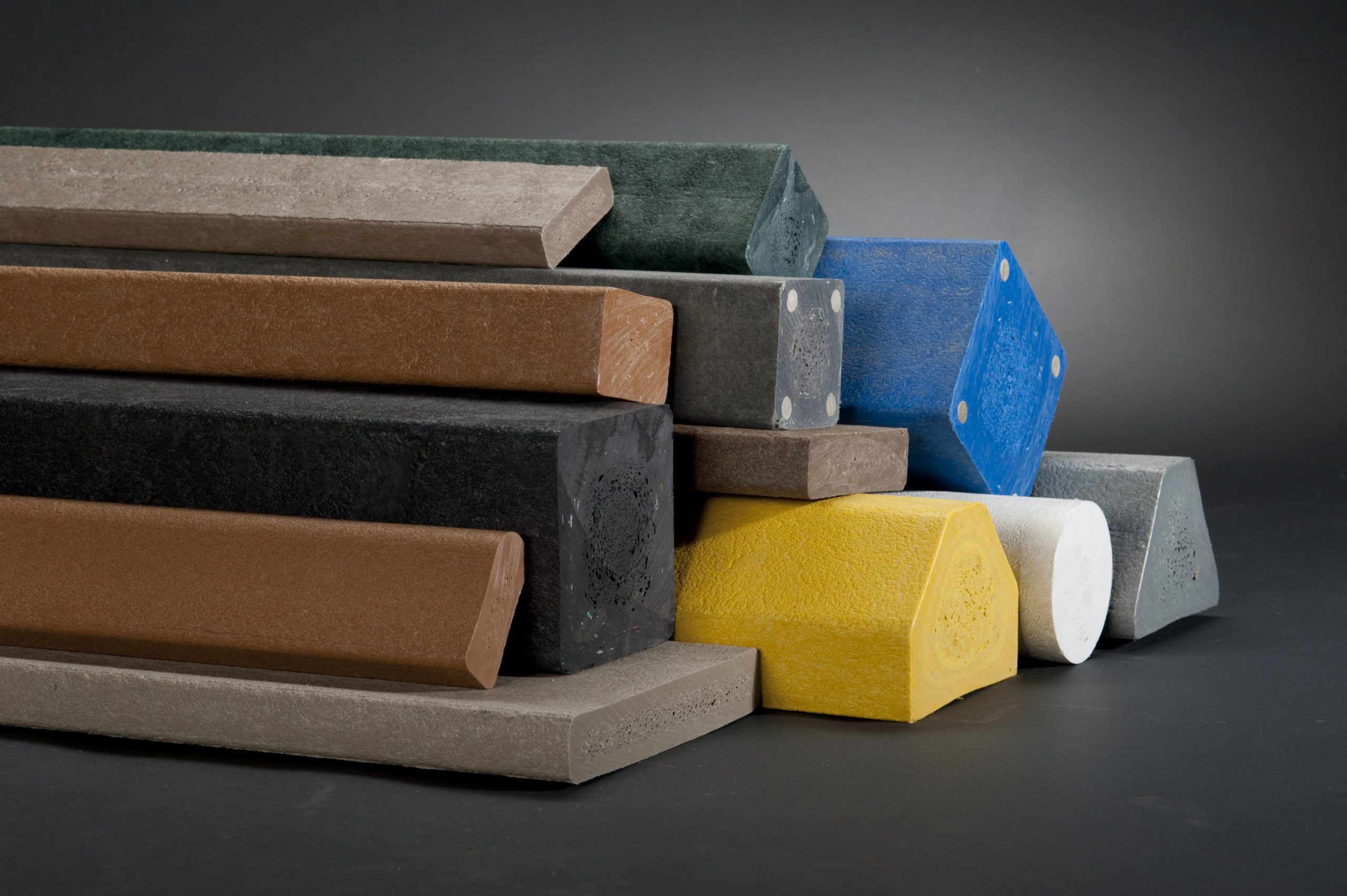Advanced Composites for Resilient and Lightweight Building And Construction
Opening the Ecological Advantages of Recycled Composites in Construction and Style
In the realm of construction and design, the usage of recycled composites holds significant promise for improving sustainability methods and decreasing ecological impact. The shift in the direction of a more lasting future in these markets pivots on unlocking the full possibility of recycled composites.

Environmental Effect Decrease
The decrease of environmental influence through using recycled composites in building and construction and layout plays an important role in lasting methods. By including recycled compounds right into building products, the building market can substantially decrease its carbon footprint and add to an extra environment-friendly future. These lasting materials, made from repurposed plastics, timber fibers, or other recycled aspects, provide a viable option to traditional construction materials without endangering on quality or durability.
Recycled compounds aid draw away waste from land fills and reduce the demand for extracting raw materials, thus preserving natural deposits. Furthermore, the production procedure of these compounds usually consumes much less energy and releases fewer greenhouse gases contrasted to generating virgin products (composites). This shift towards making use of recycled compounds not only lessens ecological harm however additionally advertises a round economic climate by motivating the reuse of products that would otherwise be disposed of
Waste Minimization
With a concentrate on reducing waste in construction and layout, the combination of recycled compounds uses a sustainable remedy to minimize environmental effect. Waste reduction is an essential facet of sustainable methods, and using recycled composites provides an opportunity to accomplish this objective effectively. By using products that have currently served their initial purpose, such as recycled plastics or reclaimed timber fibers, the building and design industries can substantially lower the amount of waste created and sent to landfills.
Recycled composites have the possible to divert significant quantities of waste from traditional disposal approaches, adding to a much more circular economy where resources are made use of effectively. Additionally, the production process of recycled compounds frequently takes in less power and generates fewer emissions compared to virgin materials, better lowering the ecological impact of building and layout jobs.
Implementing waste minimization methods through the unification of recycled compounds not just helps in saving natural deposits yet also advertises a much more lasting technique to structure and creating for a greener future.
Energy Conservation
Incorporating recycled composites not just lessens waste in construction and style yet also plays an essential function in boosting energy conservation techniques within the industry. Using recycled composites in construction can considerably contribute to power preservation via numerous means. The manufacturing of virgin materials commonly needs considerable energy inputs, whereas utilizing recycled compounds takes in less energy, thus decreasing general power usage. In addition, integrating recycled compounds can add to better insulation homes in buildings, lowering the requirement for extreme heating or cooling, and subsequently lowering energy use for climate control. The lightweight nature of many recycled compounds can lead to lighter frameworks, needing less power for transportation and setup. By promoting using recycled composites in building and construction and style, the industry can make considerable strides in the direction of accomplishing power effectiveness and lowering its carbon footprint, inevitably adding to a much more sustainable constructed setting.
Carbon Footprint Reduction
Enhancing sustainability methods via the application of recycled compounds in building and layout significantly decreases the carbon blog footprint of the market. By incorporating recycled materials right into the manufacturing of composites, the demand for virgin resources lowers, bring about reduced power consumption and greenhouse gas discharges connected with conventional manufacturing processes. This reduction in carbon footprint is crucial in combating climate change and promoting a more eco-friendly strategy to construction and see this site design.
In addition, using recycled composites also assists in diverting waste from landfills, consequently minimizing the ecological effect of disposal and advertising a circular economic situation. The carbon impact reduction attained via the adoption of recycled compounds lines up with the global press towards sustainable practices and the reduction of industrial exhausts. It showcases a commitment to liable source administration and a change towards greener alternatives in the construction and layout industries. Ultimately, by focusing on the assimilation of recycled compounds, the market can make significant strides in lowering its carbon footprint and adding to an extra sustainable future.
Sustainable Future
The assimilation of recycled compounds in construction and design not just addresses prompt environmental concerns yet likewise lays a strong foundation for a lasting future in the sector. By including recycled compounds right into structure materials and products, the building and construction and style sectors can substantially decrease their dependence on virgin resources, resulting in a much more round economic situation. This shift in the direction of sustainability is vital for minimizing the environmental impact of standard construction practices, which typically lead to high degrees of waste generation and source depletion.

Final Thought
In final thought, recycled composites supply substantial environmental advantages in construction and design by reducing environmental impact, reducing waste, saving energy, decreasing carbon footprint, and promoting a sustainable future. Embracing using recycled compounds can add to a more environmentally-friendly approach to structure and layout, inevitably leading to an extra sustainable and greener future for all.
The decrease of ecological impact through the use of recycled compounds look here in construction and layout plays an important function in sustainable methods.With an emphasis on lessening waste in construction and style, the assimilation of recycled composites provides a lasting remedy to lower environmental effect. By advertising the use of recycled composites in building and construction and style, the industry can make significant strides towards attaining power performance and minimizing its carbon impact, eventually adding to a more lasting developed atmosphere.
